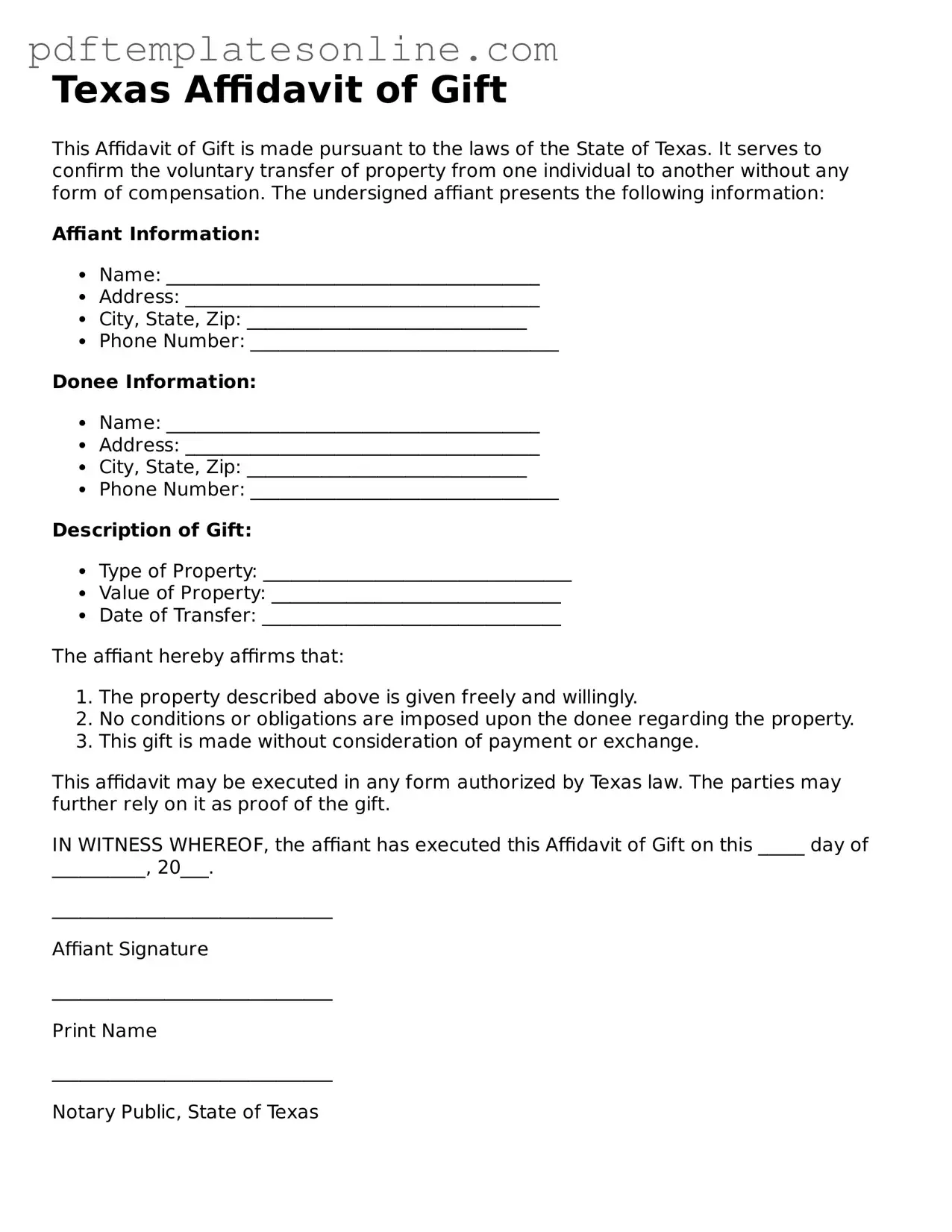Filling out the Texas Affidavit of Gift form can seem straightforward, but many people make common mistakes that can lead to delays or complications. Understanding these pitfalls can help ensure that the process goes smoothly.
One frequent error is incomplete information. Many individuals forget to fill out all required fields, such as the full names and addresses of both the donor and the recipient. Omitting any detail can result in the form being rejected or returned for corrections.
Another mistake is failing to sign the affidavit. While it may seem obvious, some people neglect to provide their signature or the date, which is crucial for the document's validity. A missing signature can invalidate the entire affidavit.
People often overlook the notarization requirement. The affidavit must be notarized to be legally binding. Skipping this step can lead to issues, especially if the document is needed for legal or financial transactions later on.
Providing incorrect or outdated information is another common error. For instance, using an old address or misspelling names can create confusion. It's essential to double-check all entries before submitting the form.
Some individuals misunderstand the gift value declaration. Accurately assessing the fair market value of the gift is important. Underestimating or overestimating can have tax implications, so it's wise to consult a professional if unsure.
Another mistake is not keeping a copy of the completed form. It’s advisable to retain a copy for personal records. This can be useful if questions arise later regarding the gift or its value.
Many people also forget to review the entire document before submission. Taking the time to read through the affidavit can help catch errors or omissions that might otherwise go unnoticed.
Some individuals fail to consider the tax implications of gifting. It's important to be aware of the annual gift tax exclusion and how it applies to your situation. Consulting with a tax advisor can provide clarity on this matter.
Finally, a lack of understanding about the purpose of the affidavit can lead to mistakes. Knowing that this document serves to formalize the gift can help individuals approach the process with the seriousness it deserves.
By being aware of these common mistakes, individuals can fill out the Texas Affidavit of Gift form correctly and avoid potential complications down the road.
